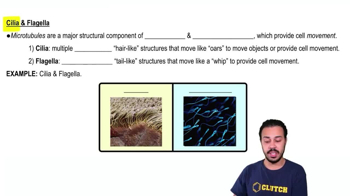Textbook Question
How does the hydrolysis of ATP result in the movement of a motor protein along a cytoskeletal filament?
1546
views
 Verified step by step guidance
Verified step by step guidance Verified video answer for a similar problem:
Verified video answer for a similar problem:


 6:05m
6:05mMaster Introduction to the Cytoskeleton with a bite sized video explanation from Bruce Bryan
Start learning